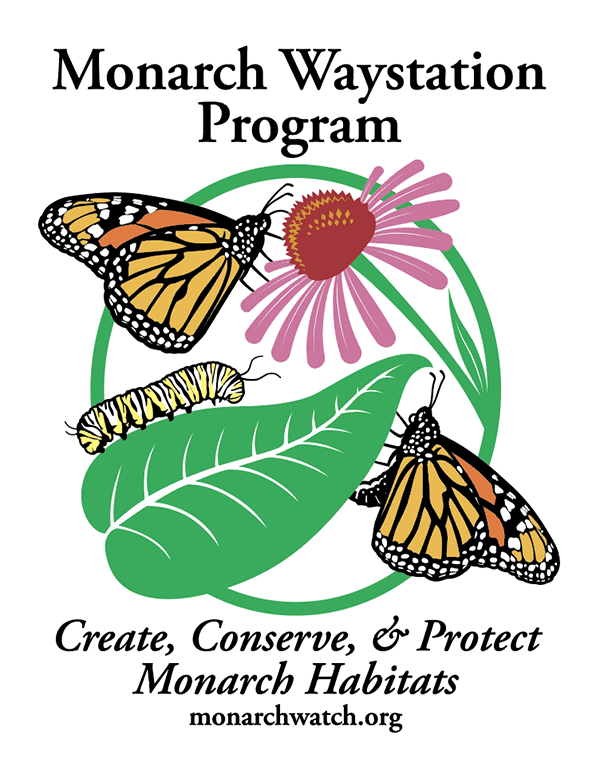Monarch Waystation program

Monarch Waystations are places that provide resources necessary for monarchs to produce successive generations and sustain their migration. Without milkweeds throughout their spring and summer breeding areas in North America, monarchs would not be able to produce the successive generations that culminate in the migration each fall. Similarly, without nectar from flowers these fall migratory monarch butterflies would be unable to make their long journey to overwintering grounds in Mexico. The need for host plants for larvae and energy sources for adults applies to all monarch and butterfly populations around the world.
To offset the loss of milkweeds and nectar sources we need to create, conserve, and protect monarch butterfly habitats. You can help by creating “Monarch Waystations” (monarch habitats) in home gardens, at schools, businesses, parks, zoos, nature centers, along roadsides, and on other unused plots of land. Creating a Monarch Waystation can be as simple as adding milkweeds and nectar sources to existing gardens or maintaining natural habitats with milkweeds. No effort is too small to have a positive impact.
NABA Butterfly Garden Certification Program

To join the North American Butterfly Association (NABA) Butterfly Garden Certification Program, your garden needs to meet the following requirements:
- At least three different native caterpillar food plants must be grown, preferably more than one plant of each selected species. NABA encourages the use of plant species native to your area but does not require it.
- At least three different native butterfly nectar sources must be grown, preferably more than one plant of each selected species. NABA encourages the use of plant species native to your area but does not require it.
- The use of pesticides is discouraged. Pesticides can kill butterflies as well as other important pollinators.
Bring Back The Pollinators Program

Although pollinator conservation is a big task, it all begins with each of us adopting four simple steps: growing pollinator-friendly flowers, providing nest sites, avoiding pesticides, and spreading the word. With these core values, pollinator conservation can be adapted to any location, whether you tend an urban community garden or a suburban yard, work in a city park, or on a farm. Make your commitment to these four principles by signing the Pollinator Protecting Pledge. Support conservation by taking part in Bringing Back Our Pollinators. Spread the word about the importance of pollinators by purchasing and displaying the Pollinator Habitat sign in your yard. The sign is produced by the Xerces Society, you can hang it in your garden, on your farm, in a park, or gift it to a friend.
NWF Certified Wildlife Habitat

The National Wildlife Federation (NWF) also encourages active habitat restoration through their Garden for Wildlife program. To create a Certified Wildlife Habitat, participants provide food and water for pollinators and other wildlife, create cover for various animals, provide safe places for wildlife to raise young, and actively maintain the health of their habitat area.
NWF Certified Wildlife Habitat
